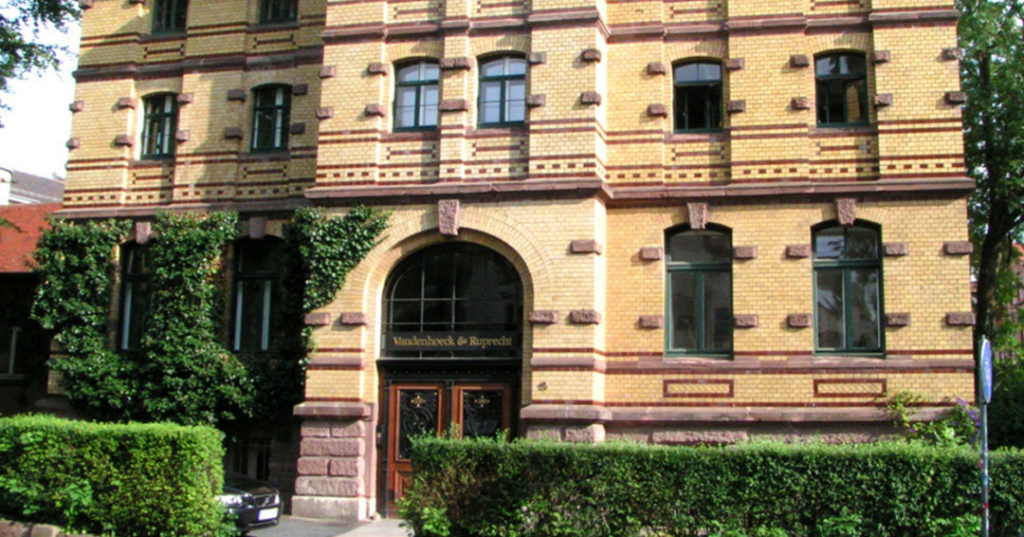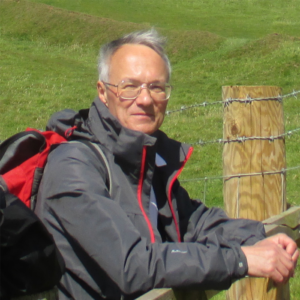Göttingen and the Strand: Publishers and Princes
Posted in 1700-1799, Dates, Places, Strandlines, universities and tagged with Abraham Vandenhoeck, Benjamin Franklin House museum and study centre, Georg-August-Universität, George IV, Göttingen, Green Dragon, Hanover, John Bacon, King George III, King's College London, Royal House of Hanover, Smollensky’s, University of Göttingen, Vandenhoeck & Ruprecht, William IV

What connects Somerset House and King’s College London in the Strand with the University of Göttingen in Germany?
The answer, it turns out, is a combination of the Royal House of Hanover and the movements of an enterprising eighteenth-century Dutch publisher.
The current Somerset House was begun in 1776 in the reign and under the patronage of King George III, in order to replace a crumbling and superannuated royal palace with modern accommodation for a range of central government offices. George’s statue, by the sculptor John Bacon, still greets visitors entering the courtyard from the Strand.
George III’s son, George IV, is the King honoured and commemorated in the name of Somerset House’s next-door neighbour, King’s College London, founded by royal charter in 1829. Now, besides being Kings of England, both Georges were also at the same time Electors (Kurfürsten) of the German state of Hanover. And it was under the patronage of George III’s father, George II, Georg-August von Braunschweig-Lüneburg (Hannover), that Hanover’s university, the Georg-August-Universität was founded in Göttingen in 1734, giving its first classes in 1737. Portraits of all three Georges, along with George IV’s son, William IV, still adorn the end wall of the University Aula — including another bust of George III by John Bacon
King’s College London, Somerset House, and the Georg-August-Universität are thus bound together as Hanoverian royal foundations, across three generations of Georges. But the link between King’s and the GAU is closer still, thanks to the travelling publisher, who now makes his entry into the story.
The Dutchman Abraham Vandenhoeck (1700-1750) left his native city of The Hague in the Low Countries for London in 1720, and established a publishing and book-selling business, under the sign of Virgil’s Head, on the Strand. His first premises, along with his then business partner George Richmond, were ‘Opposite Exeter Exchange’, that is across the street from what is now the Strand Palace Hotel, roughly where Boots, Smollensky’s or Cards Galore now are. After a few years, however, he moved to new premises further east ‘opposite the New Church in the Strand’, taking the sign of Virgil’s Head with him. ‘The New Church in the Strand’ is St Mary-le-Strand, and given the street layout of the 1720s, ‘opposite’ must mean on the south side — that is to say somewhere, even if it is hard to pinpoint the exact spot, in the stretch now occupied by King’s College’s brutalist Strand Building.
At the beginning of the 1730s, Vandenhoeck, now accompanied by his English wife Anne, moved again, first to Hamburg, where they were by 1732, and then, in 1735, to Göttingen, where Abraham had been summoned to be the new university’s official publisher. Following his death in 1750, his widow continued the business, supported by their protégé Friedrich Günther Ruprecht (1730-1816). Over two hundred and fifty years later, Vandenhoeck & Ruprecht are still the Göttingen university press, with a hugely distinguished record of scholarly publication behind them and a smart nineteenth-century brick head office on the edges of the old town. Göttingen, Hamburg, The Hague and the Strand thus go together as staging-posts in the life-journey of Abraham Vandenhoeck.
For King’s and the Strand, the connections spun by Vandenhoeck’s London business lead in other directions too. On his departure for the Continent, the Virgil’s Head was sold on to one John Wilcox, whose publications from ‘near [or ‘against’] the New Church in the Strand’ can be traced from 1733 onward. Before moving to the Strand, Wilcox had traded under the sign of the Green Dragon, in Little Britain. While there, in the mid-1720s, he befriended the young Benjamin Franklin, who was working as a pressman and compositor at a printer’s next-door to him, and allowed him to use his shop as a kind of unofficial lending-library, a service for which Franklin was eternally grateful. Franklin’s subsequent London lodgings are of course still extant a little further west along the Strand, in Craven Street, as the Benjamin Franklin House museum and study centre



